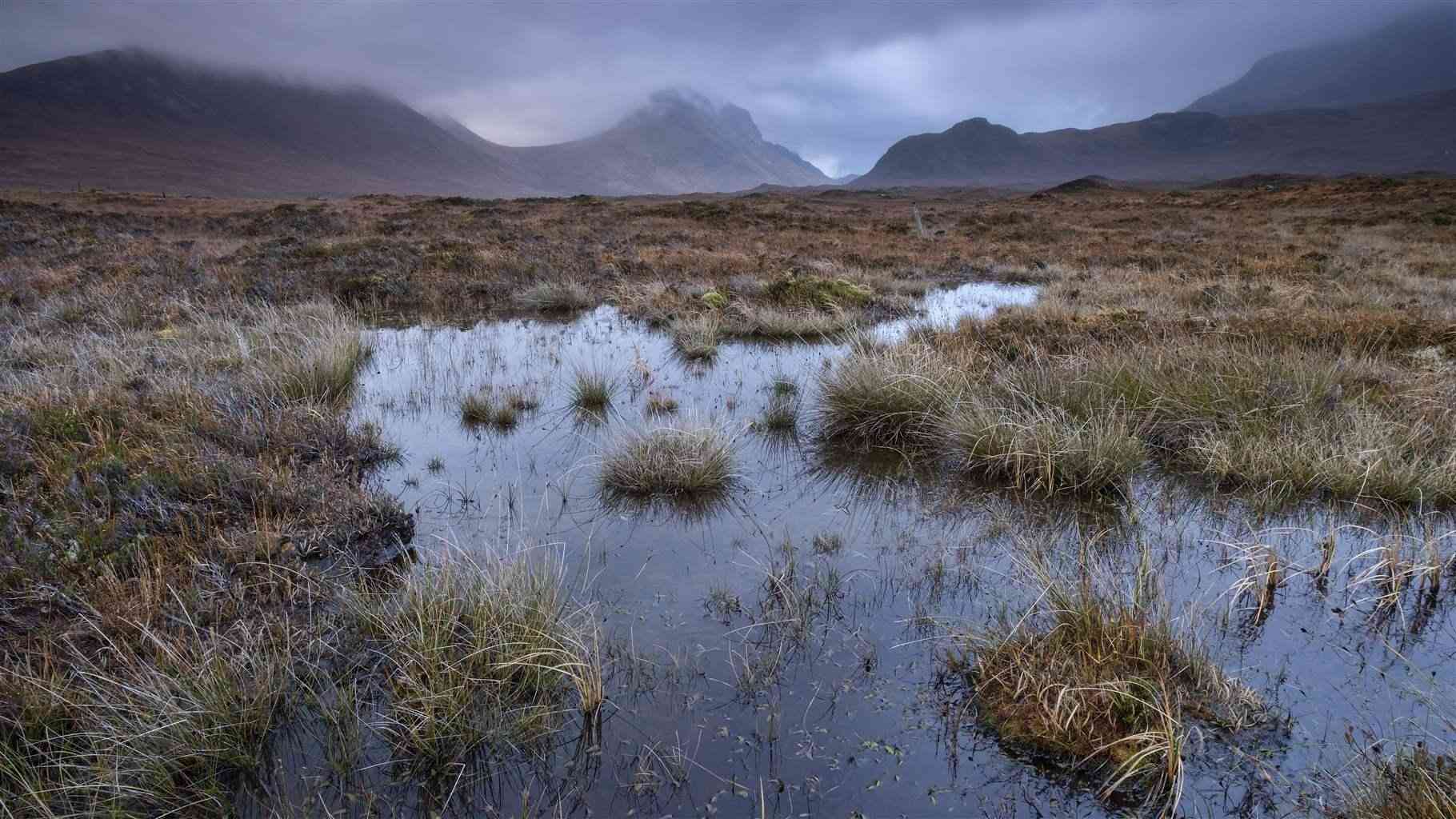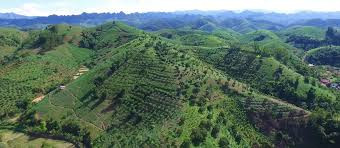
Our planet is facing multiple severe environmental challenges.
Climate change, biodiversity loss, pollution, land degradation and sea degradation are interconnected with food, energy, and water security.
They are also tightly bound to rising levels of inequality, greater poverty, increasing health disruption and more displacement of people.
Immediate action is needed that reflects the commitments and ambitions agreed in the Rio Conventions (on Biodiversity, Climate Change and Desertification), the Convention on Wetlands of International Importance Especially as Waterfowl Habitat (Convention on Wetlands, also referred to as the Ramsar Convention on Wetlands), the United Nations (UN) 2030 Agenda for Sustainable Development and the UN Decade 2021-2030 on Ecosystem Restoration.
The conservation, restoration and sustainable management of peatlands is a nature-based solution (NbS) that helps tackle climate change, supports biodiversity and livelihoods and secures a range of ecosystem services.
Peatlands are a special type of wetland ecosystem that occurs in almost every country on the globe.
Despite only covering around 3% of land surface area peatlands are responsible for storing up to one-third of the world's soil carbon.
This is twice as much carbon as in all the world's forest biomass combined. Peatlands also play a critical role in the water cycle - filtering and storing water.
- Mavhunga puts DeMbare into Chibuku quarterfinals
- Bulls to charge into Zimbabwe gold stocks
- Ndiraya concerned as goals dry up
- Letters: How solar power is transforming African farms
Keep Reading
They provide clean water, improve water quality and prevent floods (UNEP and International Union for Conservation of Nature (IUCN] 2021).
They are home to rare and unique biodiversity. They hold great cultural meaning and are connected to the wellbeing of millions of people (Crump 2017).
Despite their important roles for nature, climate and people, peatlands are misunderstood, undervalued, and underinvested (UNEP 2021b).
This Global Peatlands Assessment is an effort to improve knowledge on where peatlands are and how they are changing in order to inform and inspire action in policy, research and practice.
Africa's peatlands play an important role in regulating water flow and maintaining water purity.
Millions of people depend upon them. Several major river systems arise in peatlands, such as the Okavango, Orange and Zambezi in Southern Africa and the Congo and Nile rivers in Western and Eastern Africa.
Their loss will threaten water supplies as well as increase the likelihood of flash flooding downstream due to lost upstream water retention capacities in peatlands.
Local communities benefit directly from the collection of food, fibre and medicines from wet peatlands. Many peatlands have significant cultural value too.
Africa contains some of the world's most important and most recently recognized peatlands.
Their protection and sustainable management are crucial for climate, biodiversity and people.
There are several important biodiverse African peatlands.
The Palmiet peatlands of South Africa are dominated by the endemic Prioniumserratum semi-aquatic shrub which creates a home for many rare and valuable species.
Other important peatlands include the cushion plant-dominated Bale Mountains of Ethiopia and the Cuvette Centrale peat swamp forests that are home to populations of Lowland Gorilla, Forest Elephant, Bonobo and Dwarf Crocodile.
While most African countries have wetland policies, the majority make no specific reference to peatlands.
African peatlands are being degraded at an alarming rate. This is creating an urgent need to protect, restore and sustainably manage them.
Peatland degradation has been reported in all African countries known to host peatlands.
Indeed, 12 countries report that more than 50% of their peatlands are already degraded.
Drivers of degradation include drainage for plantation and smallholder agriculture, extraction of peat for burning in power plants and for use in agriculture.
Other threats include urbanization drainage to satisfy increasing demands for water supply and infrastructure development.
Regional policy initiatives related to the conservation and sustainable management of African peatlands include the Brazzaville Declaration on Peatlands and the Nile Basin Initiative with its specific peatlands workstream.
South Africa also has a supportive policy framework. Enforcement remains a major issue across much of the continent.
There are a number of important knowledge gaps and needs to be met to ensure protection and sustainable management of Africa's peatlands.
These include collecting baseline data on the occurrence of peatlands and the status of poorly known sites, increasing awareness of the importance of peatlands, raising awareness among policy-makers on how these sites can be better managed and mobilizing international funds and private finance to protect these peatlands.
As new policies and market-based approaches are developed, it is essential to engage local populations, promote gender-responsive approaches, and draw upon local knowledge to sustain livelihoods alongside the protection, restoration and sustainable management of Africa's peatlands.
Zimbabwe stands to gain significantly from recognizing and actively engaging in the preservation of its own peatland ecosystems.
Although perhaps not as extensive or widely documented as the peatlands in some other African regions, any peatlands within Zimbabwe's borders offer a suite of potential benefits that align directly with the nation's sustainable development goals.
Zimbabwe can leverage the carbon sequestration potential of its peatlands to contribute to climate change mitigation efforts.
By protecting these carbon-rich environments from degradation, Zimbabwe can safeguard significant stores of greenhouse gases, preventing their release into the atmosphere.
This aligns with global efforts to reduce carbon emissions and combat the impacts of climate change, potentially opening avenues for participation in carbon financing mechanisms in the future.
Zimbabwean peatlands play a crucial role in water regulation and purification.
As natural sponges, they can absorb and slowly release water, contributing to the maintenance of streamflow during dry periods and mitigating the risk of flooding during heavy rainfall events.
This is particularly important in a region often facing water scarcity and the increasing impacts of climate variability.
Furthermore, the natural filtering capacity of peatlands can contribute to improved water quality, benefiting downstream ecosystems and human populations reliant on these water sources.
Even smaller peatland areas in Zimbabwe can harbor unique biodiversity.
These specialised environments may provide habitats for endemic or threatened plant and animal species that are adapted to waterlogged and acidic conditions.
Protecting these areas contributes to the conservation of Zimbabwe's natural heritage and the maintenance of ecosystem resilience.
Fourthly, recognizing and valuing peatlands can unlock opportunities for sustainable livelihood development for local communities.
Traditional uses of peatland resources, such as the sustainable harvesting of certain plant materials, can be integrated into conservation efforts.
Furthermore, well-managed peatlands can support eco-tourism initiatives, providing economic benefits while fostering environmental stewardship.
Acknowledging the presence and importance of peatlands can inform national land-use planning and policy.
Integrating peatland conservation into broader environmental strategies ensures that these valuable ecosystems are not inadvertently degraded through agricultural expansion, infrastructure development, or other land-use changes.
This proactive approach can prevent costly environmental damage and ensure the long-term provision of essential ecosystem services.
Basically the global imperative to protect, restore, and sustainably manage peatlands is a call to action that resonates across continents, including Zimbabwe.
By recognising the inherent value of these often-overlooked ecosystems – their capacity to store carbon, regulate water, support biodiversity, and provide sustainable livelihood opportunities – Zimbabwe can contribute to global environmental efforts while simultaneously securing tangible benefits for its own people and natural heritage.
Integrating peatland conservation into national policies and practices is not just an environmental responsibility; it is a strategic investment in a more resilient and sustainable future for Zimbabwe.











